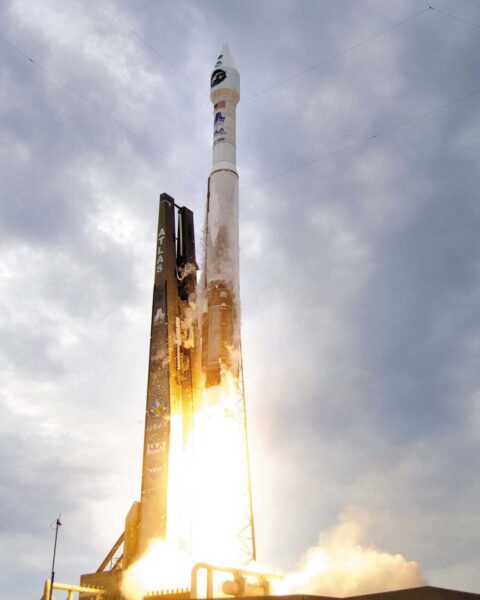The launch of LRO sets the stage for future human Moon exploration.

A rocket launch is transfixing, especially when the main engine ignites in an angry outburst of smoke, and the slow first upward strain is followed seconds later by a rush of rib-rattling sound as the slender tower of controlled fire rises smoothly skyward.
I was not in Florida for the picture-perfect June 18th launch of NASA’s Lunar Reconnaissance Orbiter, but I had the thrill of watching it on a giant hi-def screen with a hall full of excited kids at the Denver Museum of Nature & Science. Young faces stunned into stillness by the magnificent sight reminded me of how the Apollo project inspired me in grade school, framing my views of the future and limitless human possibilities. The Apollo 11 landing was bigger than history, and bigger than most stuff of legends.
My nerdy high-school friends and I hoped to live and work in space, orbiting an enlightened, peaceful world. But America soon stopped going to the Moon, and I learned that Apollo was largely motivated by Cold War politics. The point made, the program died, leaving us with unrequited plans, rusting rockets, and 842 pounds (382 kg) of Moon rocks that scientists have used to piece together a new origin story and a rough draft of solar-system history. A lot of children who followed Apollo learned to do more with less, exploring the planets with sensor-packed robotic probes. We taught university students who were not alive during Apollo. For them, our once-bright future seems a quaint and dusty history lesson.
Now young space dreamers are jealous that we went to the Moon and they didn’t. But with LRO, which will produce the best lunar maps yet, the U.S. begins a new program of robotic and eventually manned/womanned exploration and habitation. NASA joins an international movement that included recent lunar launches by Europe, Japan, China, and India.
Immediately after liftoff, I was chatting online with my Portuguese friend Rui Borges (see his “Beyond the Cradle” blog), who wrote, “When mankind reached the Moon, I was still 5 years away from landing on Earth. But I look at those images as something so magnificent in their symbolism and ingenuity that I always asked myself when I was a child why were we not there. Now my generation is witnessing the first steps to build a solid bridge that will permit us to go beyond. It will take time, but we will do it.”
Yes, and in many ways it will actually be much better this time. Not only are we returning to the Moon for the right reasons — for curiosity, knowledge of origins, and the possibility of an expansive human future — but this time around our cameras and communications are much better. When astronauts start going to the Moon and farther afield, the rest of us will be able to share in the experience, as grainy, black-and-white ghost images are replaced with real-time high-def immersive broadcasts, and the vicarious thrill ride becomes virtually real.
This time we will go to stay, and the technological democratizing of experience means that the knowledge and wonder will be for all humanity.
This article originally appeared in print in the September 2009 issue of Sky & Telescope. Subscribe to Sky & Telescope.
 0
0
Comments
You must be logged in to post a comment.